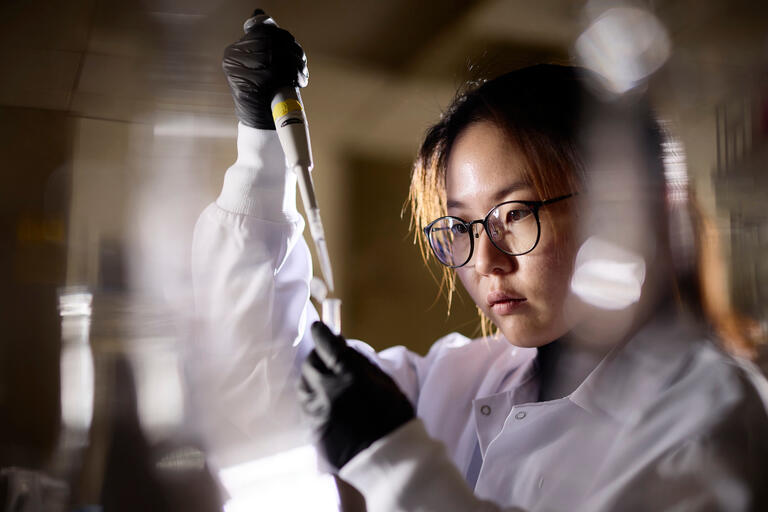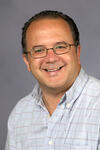
Department of Chemistry and Biochemistry News
The curriculum offered by the Department of Chemistry meets the needs of students who intend to pursue advanced training in the sciences, medicine, and other professional and technical fields. With chemistry being known as the "central science," our students establish a strong understanding in the composition, structure, and properties of matter, especially in chemical reaction.
Current Chemistry and Biochemistry News

UNLV-led study in Nature Neuroscience expands our understanding of the disease linked with autism, opening possible new diagnostic and preventative approaches.

Motivated by the challenge of understanding the human body, Stephanie Yang is studying potential cures for C. diff infections.

From growing the university’s research infrastructure to prioritizing personal passions, David Hatchett makes time to do it all.

News highlights featuring UNLV students and staff who made (refreshing) waves in the headlines.

UNLV President Keith E. Whitfield honors six graduates for their unwavering commitment to excellence.

UNLV junior Rose Jiang is the artist behind 'Primum Non Nocere,' digital art gifted to the Kirk Kerkorian School of Medicine by the class of 2023.
Chemistry and Biochemistry In The News

Researchers at the University of Nevada, Las Vegas, have made a significant breakthrough in autism research. The UNLV researchers uncovered a connection to a type of neuromuscular disease called myotonic dystrophy.

A recent discovery of a molecular connection between autism and myotonic dystrophy, a type of neuromuscular disease, may provide a breakthrough on how clinicians approach autism spectrum disorder. The new study by an interdisciplinary team of biomedical scientists, published on April 21 in Nature Neuroscience, used myotonic dystrophy as a tool or model to learn more about autism – effectively using one disorder to better understand the other.

A recent discovery of a molecular connection between autism and myotonic dystrophy, a type of neuromuscular disease, may provide a breakthrough on how clinicians approach autism spectrum disorder. The new study by an interdisciplinary team of biomedical scientists, published on April 21 in Nature Neuroscience, used myotonic dystrophy as a tool or model to learn more about autism – effectively using one disorder to better understand the other.

Autism may be caused by a little-known genetic condition, experts say. They've found children with myotonic dystrophy type 1 (DM1) are also 14 times more likely to develop autistic spectrum disorder.
Scientists from The Hospital for Sick Children (SickKids) and the University of Las Vegas, Nevada (UNLV) have uncovered a genetic link between autism spectrum disorder (ASD) and a rare genetic condition called myotonic dystrophy type 1 (DM1).
Germs are everywhere, but these spots in your home are extra ick!
Chemistry and Biochemistry Experts


